Your sliding door is sticking and hard to move. It’s frustrating and noisy, ruining the smooth feel of your space. The secret to fixing this lies in the door runners.
Door runners, or rollers, are wheels that let a sliding door move. They fit into a track, support the door’s weight, and reduce friction. This ensures the door glides smoothly and stays aligned, preventing it from sticking, dragging, or feeling heavy.
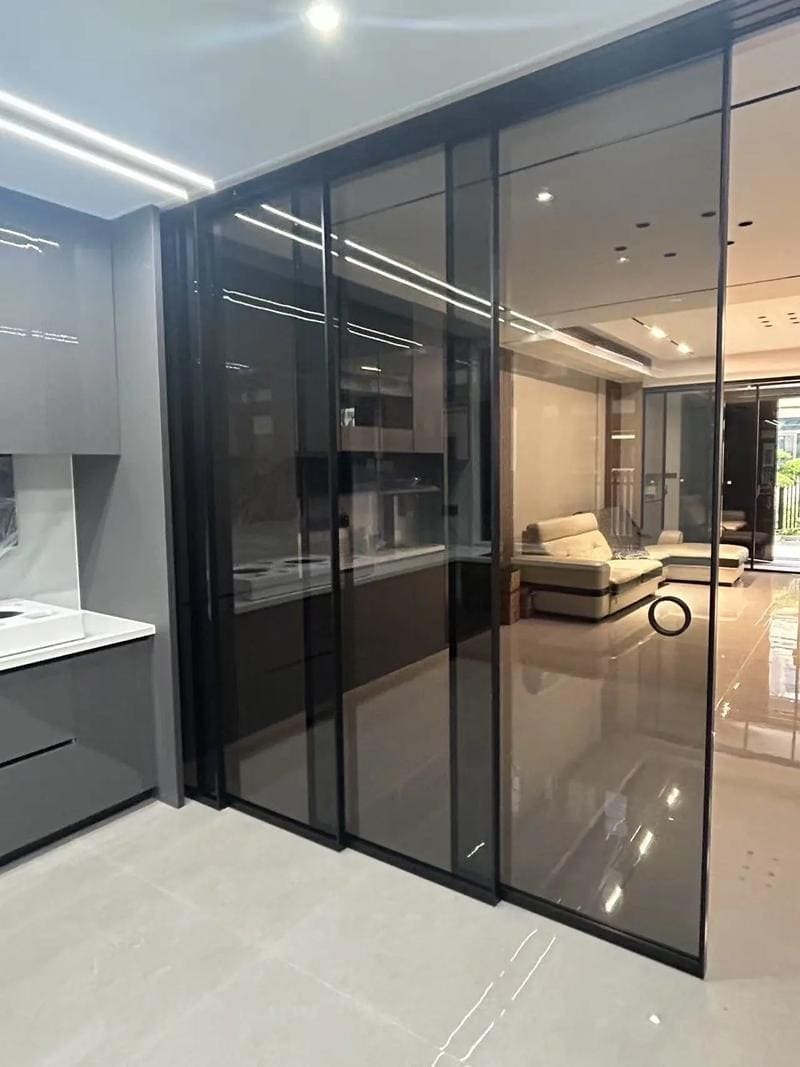
In my years of manufacturing door hardware at opensliding, I’ve seen how these small components make a huge difference. They are the heart of any sliding system. A high-quality runner means a silent, effortless door; a poor one leads to headaches for everyone, from the installer to the end-user. For purchasing managers like gene, choosing the right runner is one of the most critical decisions. Let’s explore some common questions about how these systems work and how to maintain them.
Can I fix a damaged sliding door track myself?
A damaged track has stopped your door completely. Calling a professional is expensive and takes time. But with a bit of knowledge, you can often handle the repair yourself.
Yes, you can often fix minor track damage yourself. Cleaning out debris or gently tapping out small dents with a rubber mallet and a block of wood can restore function. However, a severely bent, warped, or cracked track needs a professional replacement for safety and proper operation.
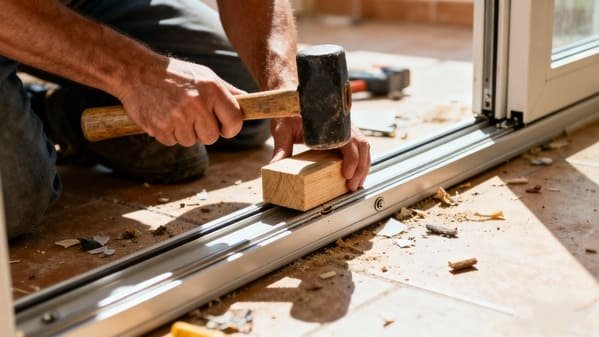
Before you start any repair, you need to understand the problem. A fix is only as good as your diagnosis. I always tell my clients to start with a thorough inspection, as it saves time and money.
Assess the Damage
First, look closely at the track. Is it filled with dirt, dust, or pet hair? This is the most common and easiest problem to fix. Use a vacuum with a crevice tool1 to clear it out, followed by a stiff brush. If you see small dents or bends, note their location. Check if the track is warped or pulling away from the wall or floor. This is a more serious issue. A straight edge or level can help you see if the track is truly straight.
Simple DIY Fixes
For simple cleaning, a solvent can help remove stubborn grime after you’ve vacuumed. For minor dents2, place a small block of wood over the dented area and gently tap it with a rubber mallet. This distributes the force and prevents you from causing more damage. Work slowly and check the door’s movement frequently.
Here’s a simple guide I share with clients:
| Issue | DIY Fix Possible? | When to Call a Pro |
|---|---|---|
| Dirt & Debris | Yes | If the track is still blocked after cleaning. |
| Minor Dents | Yes | If the roller still catches or jumps after the fix. |
| Major Bends/Warping | No | Always. Bending it back can weaken the metal. |
| Cracked Track | No | A cracked track has failed and needs replacement. |
How do I know if my sliding door rollers are bad?
Your sliding door feels heavy or makes awful noises. You’re not sure if it’s the track or something else. Knowing the clear signs of bad rollers saves you diagnostic time.
You’ll know your rollers are bad if the door is hard to push, makes grinding or squeaking sounds, or wobbles in its track. A close inspection will often reveal visible damage like cracks, rust, or flat spots on the roller wheels themselves.
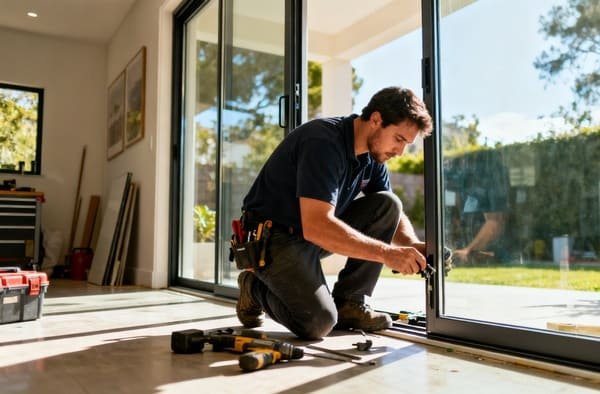
Over the years, I’ve handled thousands of rollers, both new and old. The difference between a fresh, high-quality roller and a worn-out one is night and day. A failing roller puts stress on the whole system, including the track and the door frame. Catching the problem early is key.
Telltale Sounds and Sensations
Listen to your door. A grinding noise often means the bearings inside the roller have failed and metal is rubbing against metal. A scraping sound could mean the roller has seized completely and is now being dragged along the track instead of rolling. If the door feels like it’s jumping or bumping, the roller likely has a flat spot or is cracked. It’s no longer perfectly round, so the movement is not smooth. Resistance or needing extra force to move the door is the most common sign that the rollers are worn and creating too much friction.
The Visual Inspection
To get a definitive answer, you need to look at the rollers. This usually requires you to carefully lift the door off the track. Please do this with a helper, as sliding doors can be very heavy. Once the door is safely off, inspect the roller assemblies3 at the bottom or top.
Look for these key indicators:
- Cracks or Breaks: Any visible crack4 in the wheel material (usually nylon or steel) means it needs immediate replacement.
- Wobble: Grab the wheel and see if it wobbles on its axle. Excessive play means the internal bearings are worn out.
- Flat Spots: A roller should be perfectly round. Any flat areas will cause a bumpy ride.
- Rust or Corrosion: This is especially common on steel rollers in damp environments. Rust creates friction and will eventually cause the roller to fail.
What is the point of spinning doors?
You see the wheels on a sliding door and think they just roll. But is their function more complex? The simple spinning motion is the very core of what makes the entire system work.
When someone talks about “spinning” on a sliding door, they mean the rollers or wheels. Their point is to convert high sliding friction into very low rolling friction. This allows a very heavy door to glide easily with minimal force, making it functional and effortless.
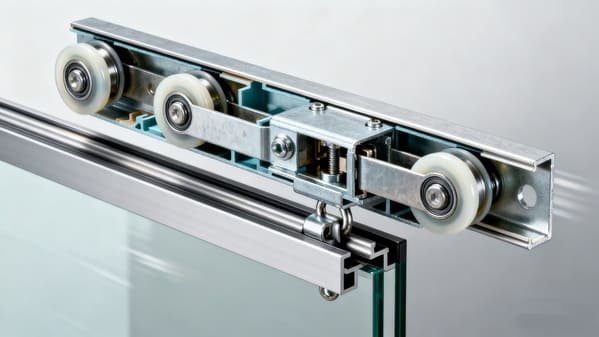
I often explain this concept to new buyers using a simple analogy. Imagine trying to push a heavy box across the floor. It takes a lot of effort because of sliding friction. Now, put that same box on a cart with wheels. You can push it with one hand. That’s the magic of rolling friction, and it’s exactly what door runners do for a heavy glass or wooden door.
From Friction to Flow
The entire purpose of the wheel is to overcome friction. Instead of the door’s weight dragging along the track surface, that weight is focused on the small points where the wheels touch the track. Because the wheels can spin, they roll over the surface instead of scraping against it. This simple piece of engineering reduces the required effort by more than 90%. High-quality rollers use materials like durable nylon or coated steel to ensure this rolling motion is as smooth and quiet as possible.
The Role of Bearings
Inside better-quality rollers, you’ll find ball bearings. These are tiny, hardened steel balls that sit between the wheel and the axle. They are the secret to an ultra-smooth, silent glide. The bearings themselves roll, reducing friction even further within the wheel mechanism. This is a key feature that purchasing managers like Jacky look for. Sourcing doors with cheap, unsealed bearings leads to customer complaints down the line. A premium roller with sealed precision ball bearings will resist dirt and operate smoothly for years. In our factory, this is one area where we never cut corners.
How do sliding door tracks work?
A sliding door glides along a simple metal channel. But how does this system keep a heavy door secure and aligned? The track and rollers work together in a precise and crucial partnership.
A sliding door track is a guide channel that holds the rollers. The rollers sit inside or hang from the track, which supports the door’s full weight and forces it to move in a straight line. This mechanism keeps the door perfectly aligned and stable.
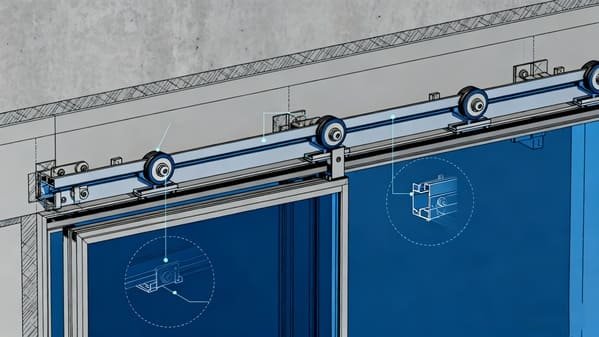
The track is the backbone of the entire sliding system. Without it, the door would be unstable and unusable. It’s a simple part, but its design is critical. The shape of the track must perfectly match the shape of the roller for the system to function correctly.
Types of Track Systems
There are two main systems that I manufacture parts for, and each is used for different applications.
- Top-Hung Systems5: Here, the track is mounted above the door, and the rollers are attached to the top of the door. The door hangs from the track. This is common for interior partition doors and wardrobe doors. The main benefit is that there is no track on the floor to trip over or collect dirt.
- Bottom-Rolling Systems6: In this case, the track is on the floor or sill, and the rollers are at the bottom of the door. The door’s weight rests on this bottom track. This design is necessary for very heavy exterior patio doors, as the floor can support more weight than a header.
The Track and Roller Partnership
The relationship between the track’s shape and the roller’s shape is key. A track might be a simple U-shaped channel, and the roller a flat wheel that sits inside it. Other systems use a V-groove wheel that rides on a raised V-shaped rail. This design provides excellent stability and prevents the door from wobbling. When a buyer like Jacky orders from my factory, we ensure the rollers and tracks he receives are engineered as a matched set. Using mismatched parts is a common mistake that leads to poor performance, noise, and premature wear. The system only works when both components are designed for each other.
Conclusion
Door runners and tracks are simple but vital. Understanding how they work, spotting problems, and doing basic maintenance will ensure your sliding doors always operate smoothly and reliably.
Explore this link to find top-rated vacuums that effectively clean hard-to-reach areas, ensuring your tracks stay debris-free. ↩
Discover expert tips and techniques for repairing minor dents, helping you maintain smooth door operation without professional help. ↩
Understanding roller assemblies is crucial for maintaining smooth door operation and preventing future issues. ↩
Learning to identify visible cracks can help you catch problems early and ensure your sliding door functions properly. ↩
Explore the benefits of Top-Hung Systems to understand why they are ideal for various door applications. ↩
Learn how Bottom-Rolling Systems are designed to handle heavy doors effectively, ensuring durability and performance. ↩

